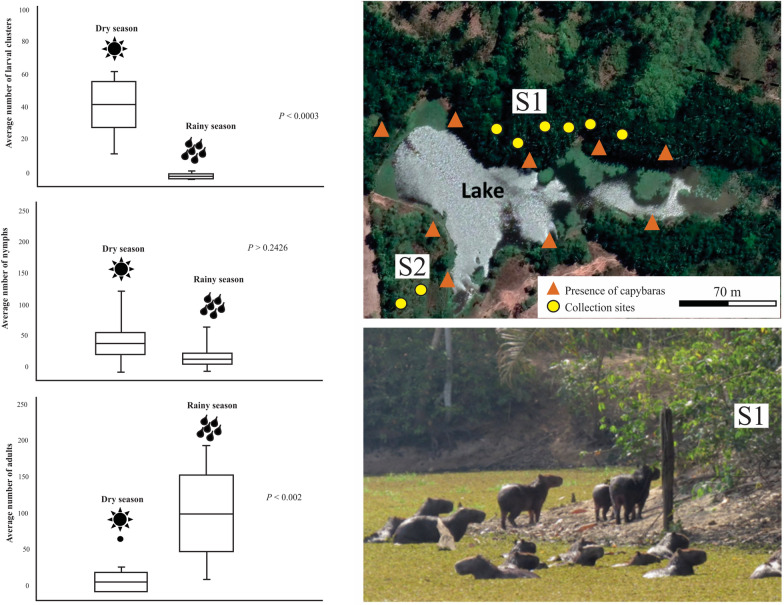- Record: found
- Abstract: found
- Article: found
Seasonal dynamics of Amblyomma cajennense (Fabricius, 1787) sensu stricto in a degraded area of the Amazon biome, with notes on Rickettsia amblyommatis infection

Read this article at
Abstract
Background
The tick Amblyomma cajennense sensu stricto ( A. cajennense s.s.) frequently parasitizes animals and humans in the Amazon biome, in addition to being a vector of Rickettsia amblyommatis. In the present study, we evaluated both the population dynamics of A. cajennense s.s. in a degraded area of the Amazon biome and the presence of rickettsial organisms in this tick population.
Methods
The study was carried out in a rural area of the Santa Inês municipality (altitude: 24 m a.s.l.), Maranhão state, Brazil. Ticks were collected from the environment for 24 consecutive months, from June 2021 to May 2023. The region is characterized by two warm seasons: a rainy season (November–May) and a dry season (June–October). We characterized the temporal activity of A. cajennense s.s. on the vegetation by examining questing activity for each life stage (larvae, nymphs, adults [males and females]) in relation to the dry and rainy season. Ticks collected in this study were randomly selected and individually tested by a TaqMan real-time PCR assay that targeted a 147-bp fragment of the rickettsial gltA gene.
Results
Overall, 1843 (62.4%) adults (52.6% females, 47.4% males), 1110 (37.6%) nymphs and 398 larval clusters were collected. All adult females and nymphs were morphologically identified as A. cajennense s.s. Larval activity was observed from April to December, with a peak from June to September (dry season); nymph abundance peaked from September to November (transition period between dry and rainy seasons); and adult ticks were abundant from October to May (spring/summer/early autumn). The infection rate by R. amblyommatis in A. cajennense s.s. ticks was at least 7% (7/99).
Conclusion
Our data suggest a 1-year generation pattern for A. cajennense s.s., with a well-defined seasonality of larvae, nymphs and adults in the Amazon biome. Larvae predominate during the dry season, nymphs are most abundant in the dry-rainy season transition and adults are most abundant in the rainy season. The presence of R. amblyommatis in adult ticks suggests that animals and humans in the study region are at risk of infection by this species belonging to the spotted fever group of Rickettsia.
Related collections
Most cited references51
- Record: found
- Abstract: found
- Article: not found
Genotypic identification of rickettsiae and estimation of intraspecies sequence divergence for portions of two rickettsial genes.
- Record: found
- Abstract: found
- Article: not found
The Blacklegged Tick, Ixodes scapularis: An Increasing Public Health Concern.
- Record: found
- Abstract: found
- Article: not found
